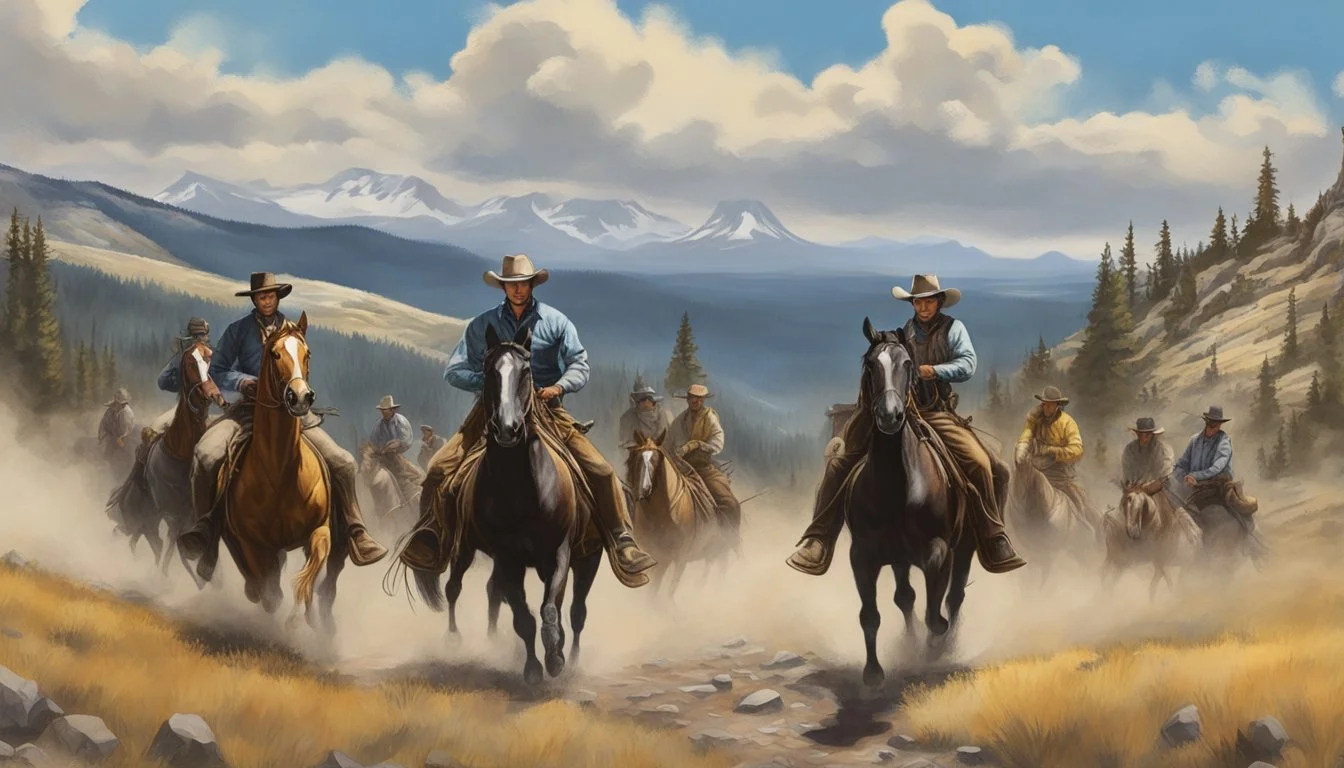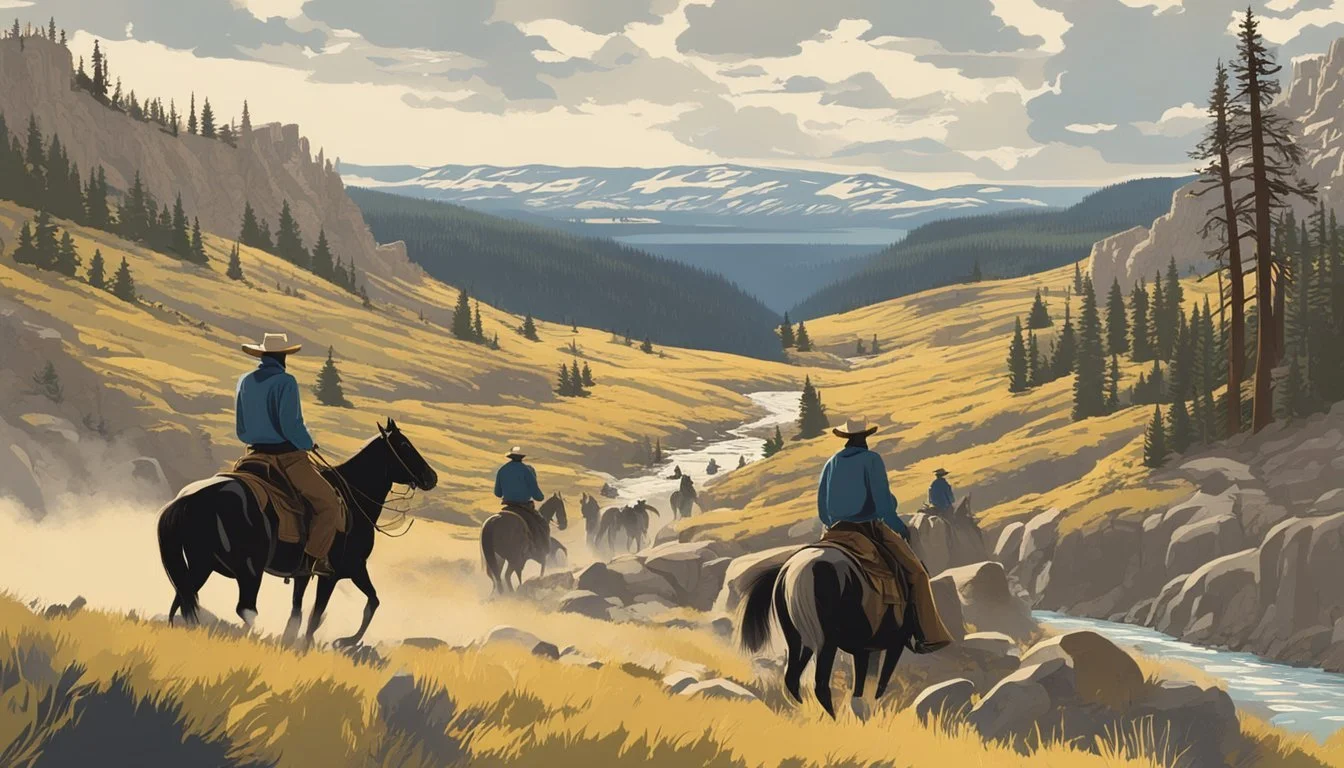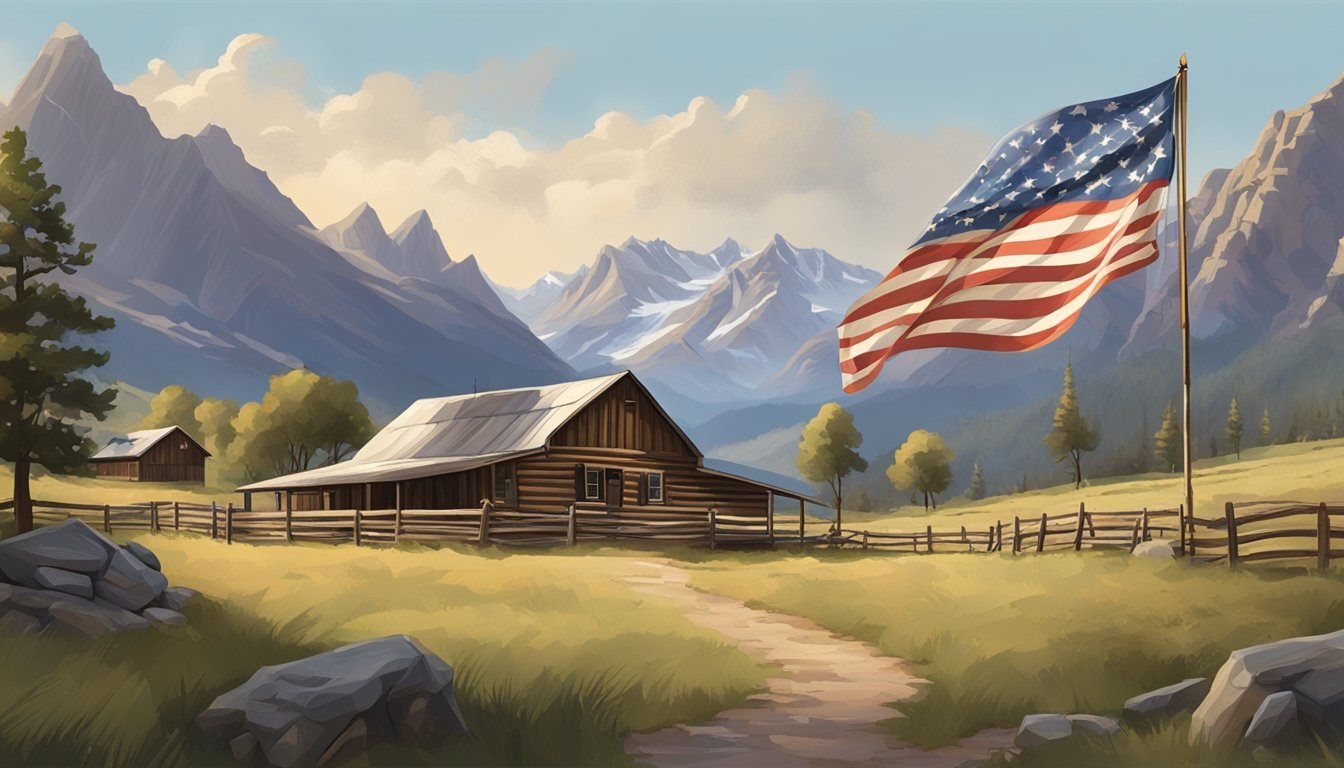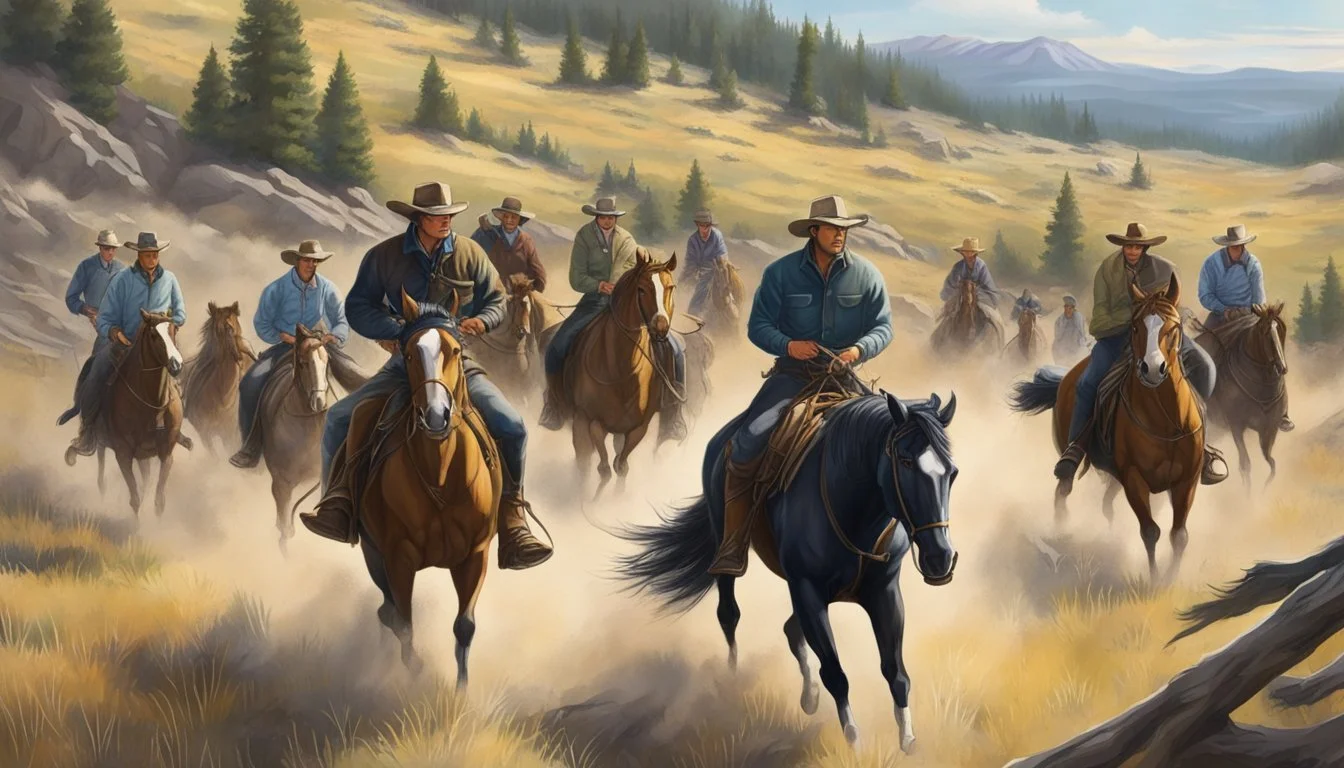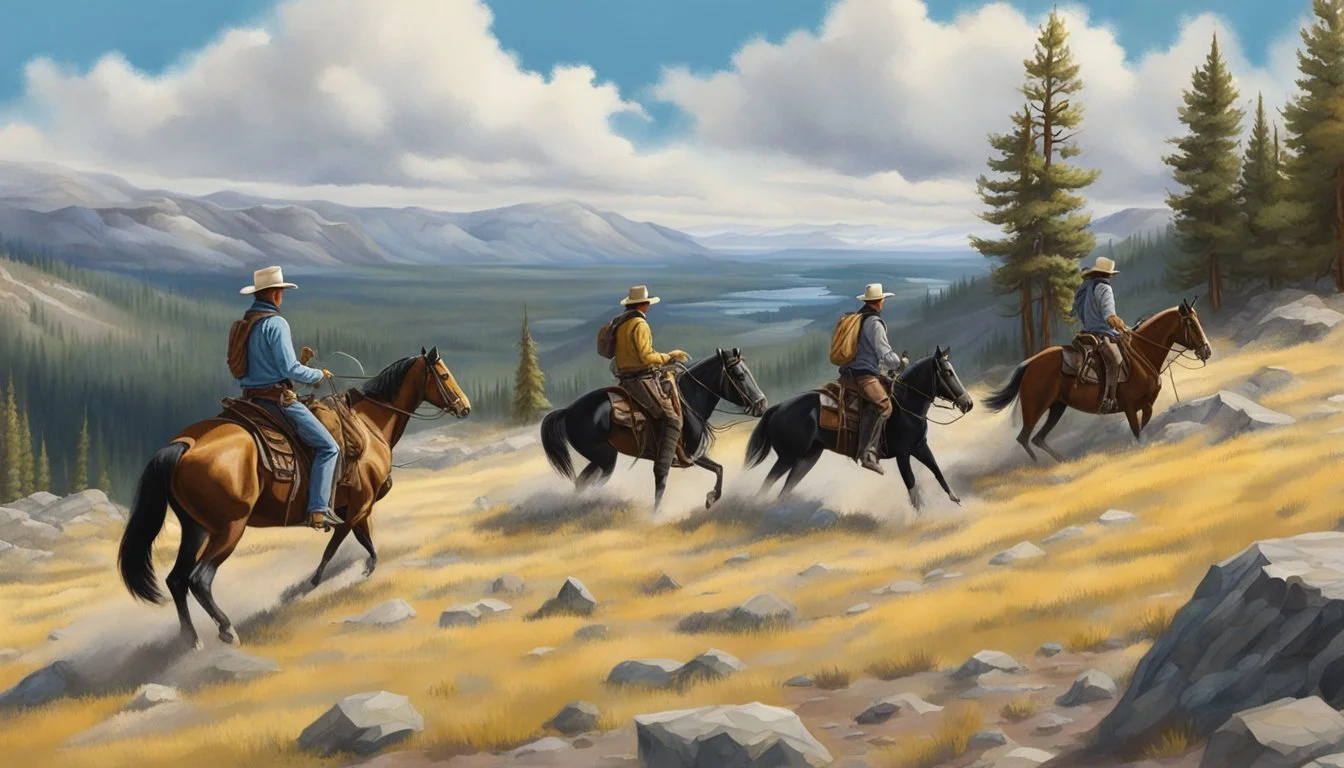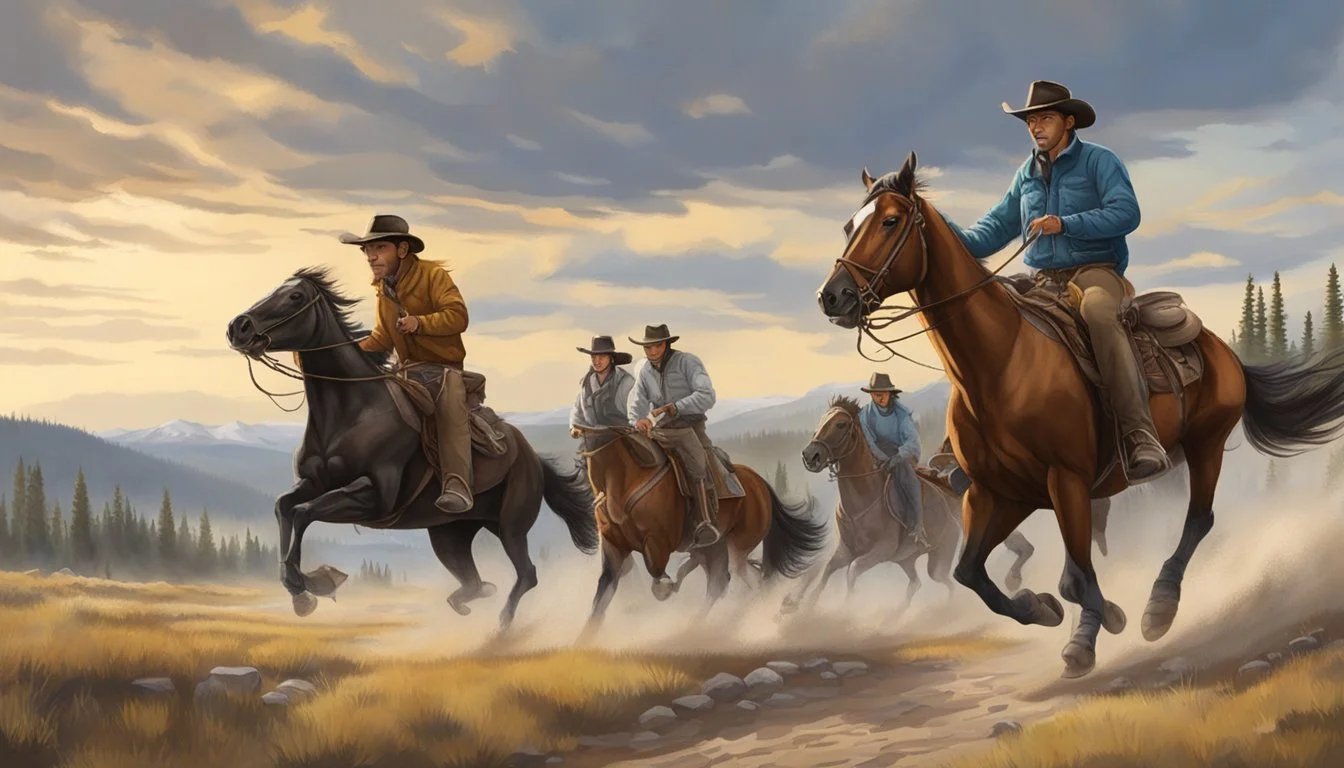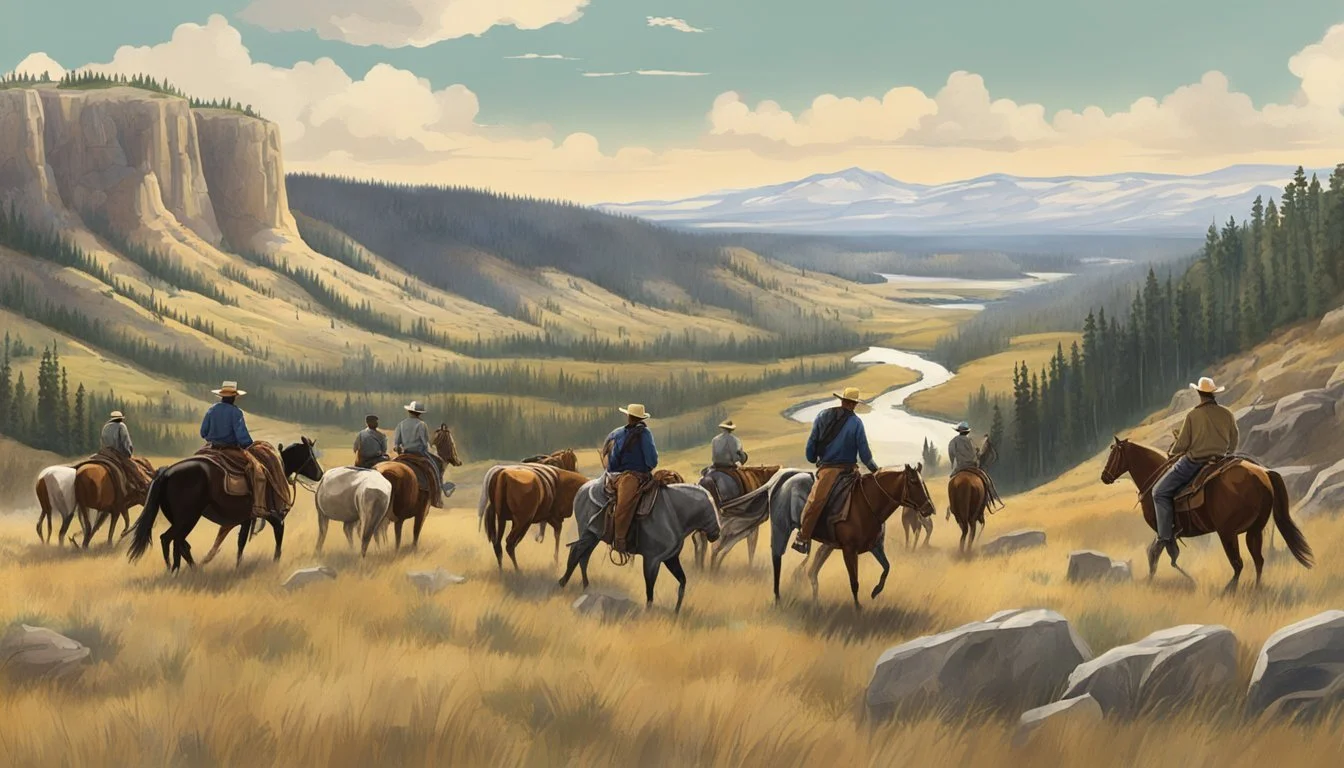Duttons vs. Government: Yellowstone Exposes the Battle for Freedom and Land!
Yellowstone captivates audiences with its portrayal of the Dutton family's struggle to maintain control over their sprawling ranch in Montana. At the heart of the series lies a clash between traditional Western values and encroaching government influence. The show's libertarian undertones shine through as the Duttons fiercely defend their property rights against external pressures, embodying a rugged individualism that resonates with many viewers.
Created by Taylor Sheridan, Yellowstone features Kevin Costner as John Dutton, the patriarch determined to preserve his family's legacy. The Dutton Ranch, spanning nearly 800,000 acres, becomes a battleground for competing interests. This conflict mirrors real-world tensions between private landowners and government regulations in the American West.
The series taps into a deep-seated cultural narrative of self-reliance and limited government intervention. As the Duttons navigate complex political landscapes and fight off threats to their way of life, Yellowstone explores themes of personal freedom, property rights, and the perceived overreach of bureaucratic systems. These elements combine to create a compelling drama that reflects ongoing debates about the role of government in modern America.
Setting the Stage: Historical Context
The Dutton Ranch's saga unfolds against the backdrop of Montana's rugged landscape, intertwining with pivotal moments in American history. From its 19th-century origins to present-day conflicts, the ranch embodies the enduring spirit of the American West.
The Evolution from 1883 to Present
The Dutton Ranch's story begins in 1883, mirroring the expansion of the American frontier. Established in Montana's Bitterroot Valley, the ranch grew from a modest homestead to a vast cattle empire. By 1923, it had become a cornerstone of the local economy, weathering challenges like harsh winters and market fluctuations.
The ranch's development paralleled Montana's transformation from territory to statehood. As railroads expanded and settlers poured in, the Duttons adapted their operations. They embraced new technologies and farming practices while maintaining traditional ranching methods.
Over time, the ranch faced increasing pressure from urbanization and changing land use policies. These challenges shaped the Duttons' fierce independence and determination to preserve their way of life.
Cultural Significance of the Ranch
The Dutton Ranch stands as a symbol of the American cowboy ethos. It represents self-reliance, hard work, and a deep connection to the land. The ranch's longevity has made it a cultural touchstone in Montana, embodying the state's ranching heritage.
Local communities have grown around the ranch, with many residents finding employment or economic opportunities tied to its operations. The Duttons' influence extends beyond their property lines, shaping local politics and social dynamics.
The ranch also serves as a living museum of Western traditions. Its continued operation preserves skills and practices that might otherwise be lost to time, from horse-breaking to cattle drives.
Influence of the Great Depression and Prohibition
The Great Depression hit Montana's agricultural sector hard, testing the Dutton Ranch's resilience. Many neighboring farms and ranches failed, but the Duttons' diversified operations helped them weather the economic storm. They took on additional laborers, providing a lifeline to struggling families.
Prohibition brought unexpected challenges and opportunities. Some ranchers turned to bootlegging to supplement their income. The Duttons likely faced tough choices between legality and survival during this era.
These national crises strengthened the ranch's self-reliant ethos. The Duttons learned to distrust outside intervention, preferring to solve problems internally. This mindset laid the groundwork for future conflicts with government agencies and regulations.
Conceptualizing Yellowstone
Yellowstone blends traditional Western elements with modern themes, creating a unique television experience. The show's creator and the genre it occupies shape its distinctive approach to storytelling.
Taylor Sheridan's Vision
Taylor Sheridan, the mastermind behind Yellowstone, brings a fresh perspective to the American West. His background in acting and screenwriting informs his nuanced approach to character development and plot.
Sheridan's vision for Yellowstone emphasizes authenticity, drawing from his personal experiences growing up in rural Texas. He crafts complex characters that defy stereotypes, offering viewers a more realistic portrayal of life in the modern West.
The show's exploration of land disputes, family dynamics, and political intrigue reflects Sheridan's interest in the evolving nature of the American frontier. His storytelling style balances action with thoughtful commentary on contemporary issues.
The Neo-Western Genre
Yellowstone exemplifies the Neo-Western genre, updating classic Western tropes for a 21st-century audience. The show retains familiar elements like vast landscapes and rugged individualism while incorporating modern conflicts and technology.
Unlike traditional Westerns, Yellowstone tackles current topics such as Native American rights, corporate land grabs, and environmental concerns. This blend of old and new creates a compelling narrative that resonates with viewers.
The Paramount Network series also distinguishes itself through its cinematic quality, high production values, and star-studded cast. These elements elevate Yellowstone beyond typical television fare, contributing to its widespread popularity and critical acclaim.
The Dutton Family Dynasty
The Dutton family's iron grip on Montana's largest ranch spans generations. Their legacy intertwines power, land, and an unyielding commitment to preserving their way of life against mounting threats.
John Dutton's Role and Vision
John Dutton stands as the formidable patriarch of the Yellowstone Dutton Ranch. His unwavering dedication to protecting the family's vast landholdings shapes every decision he makes.
John's vision extends beyond mere preservation. He sees the ranch as a bulwark against encroaching development and government overreach.
His leadership style blends ruthless pragmatism with a deep-rooted love for the land. This approach often puts him at odds with local officials, developers, and even his own family members.
The Heirs: Beth, Jamie, and Kayce
The Dutton children represent different facets of the family's complex legacy:
Beth Dutton: Fiercely intelligent and ruthless in business, Beth is John's most trusted ally. Her loyalty to the ranch is matched only by her cunning in corporate boardrooms.
Jamie Dutton: The adopted son with political ambitions, Jamie's relationship with the family is fraught with tension. His legal expertise proves both an asset and a liability.
Kayce Dutton: A former Navy SEAL, Kayce struggles to balance his duties to the ranch with his own young family. His connection to the land runs deep, but so do his inner conflicts.
Family Values and Legacy
The Dutton family ethos revolves around several core principles:
Protect the land at all costs
Family loyalty above all else
Distrust of outsiders and government interference
This mindset has allowed the Duttons to maintain their grip on power for generations. It also fuels ongoing conflicts with those who seek to change or challenge their way of life.
The family's legacy is both a source of pride and a burden. Each generation must grapple with evolving threats to their dominion while staying true to the values that built their empire.
The Ranch: A Microcosm of Libertarian Ideals
The Dutton Ranch embodies core libertarian principles through its fierce defense of property rights, resistance to external control, and internal economic practices. These elements combine to create a microcosm of libertarian ideals within the Yellowstone universe.
Property Rights and Self-Governance
The Dutton family's unwavering commitment to protecting their vast 776,000-acre ranch reflects a fundamental libertarian belief in strong property rights. John Dutton views the land not just as an asset, but as an extension of the family's identity and sovereignty.
This stance manifests in their approach to self-governance. The Duttons largely operate outside traditional legal frameworks, preferring to handle disputes and enforce rules on their own terms.
Their methods often blur ethical lines but underscore a core libertarian tenet: individuals should have maximum freedom to manage their property without government interference.
Resisting External Authorities
The Dutton Ranch consistently finds itself at odds with various external forces seeking to exert control over their land and operations. This ongoing struggle against outside interference aligns closely with libertarian skepticism of centralized authority.
Key conflicts include:
Battles with land developers like Market Equities
Tensions with state and federal agencies
Disputes with neighboring Native American tribes
In each case, the Duttons employ a range of tactics to maintain their autonomy, from legal maneuvering to more questionable methods. This relentless defense of independence echoes libertarian ideals of minimal government intervention.
Economic Freedoms within the Ranch
Within the boundaries of the Dutton Ranch, a microcosm of free-market principles emerges. The family exercises significant control over economic activities on their property, largely free from external regulation.
Key aspects include:
Direct negotiation of contracts and agreements
Flexible labor arrangements with ranch hands
Self-determined resource allocation and land use
This internal economic system reflects libertarian ideals of minimal interference in voluntary transactions between individuals. The ranch operates as its own economic ecosystem, guided primarily by the Duttons' decisions rather than external market forces or government regulations.
Politics and Power on the Frontier
The Dutton Ranch sits at the center of a complex web of political maneuvering and power struggles. Alliances shift as various factions vie for control of Montana's valuable land and resources.
Strategic Alliances and Opposition
John Dutton wields significant influence through his expansive ranch and political connections. He forms strategic partnerships with local officials and business leaders to protect his interests. These alliances often put him at odds with outside developers and government agencies.
The ranch faces opposition from environmental groups and land developers seeking to exploit Montana's natural beauty. John must navigate these conflicts carefully, balancing preservation with economic pressures.
State and federal agencies also challenge the Duttons' authority. Conflicts arise over land use, water rights, and environmental regulations. John leverages his political savvy to outmaneuver bureaucrats and maintain control.
Chief Joseph and the Native American Perspective
The nearby Broken Rock Reservation adds another layer to the region's power dynamics. Chief Thomas Rainwater leads efforts to reclaim ancestral lands and assert tribal sovereignty.
Rainwater's strategic approach echoes the legacy of Chief Joseph, who fought to protect Nez Perce lands in the 19th century. Both leaders navigate complex relationships with state and federal governments.
The reservation faces economic challenges and limited resources. Rainwater seeks to build casino developments and other ventures to improve his people's lives. This often puts him in direct conflict with the Duttons and other ranchers.
Yellowstone's Portrayal of Political Intrigue
The show depicts a world of backroom deals and subtle power plays. Characters engage in complex negotiations, trading favors and leveraging information to gain advantages.
Local elections become battlegrounds, with candidates backed by various factions. Campaign contributions and endorsements carry significant weight in shaping policy.
Media manipulation plays a role in swaying public opinion. Characters strategically leak information or stage events to control narratives and influence outcomes.
The series highlights how personal relationships intertwine with political maneuvering. Family loyalties, romantic entanglements, and long-standing grudges all factor into the characters' decisions and alliances.
Analyzing Yellowstone's Narrative Techniques
Yellowstone employs powerful storytelling methods to bring its complex world to life. The show weaves together symbolism, character arcs, and ensemble dynamics to create a rich tapestry of modern Western drama.
The Use of Symbolism and Motifs
The Dutton ranch itself serves as a potent symbol of tradition and the American frontier spirit. Its vast landscapes represent freedom and untamed wilderness, contrasting sharply with encroaching modernization.
Animals play a significant role in the show's symbolism. Wolves and bears embody the wild nature of the land, while horses symbolize the characters' connection to their ranching heritage.
The Yellowstone brand becomes a powerful motif, representing loyalty and belonging to the Dutton family. It marks both cattle and people, blurring the line between ownership and identity.
Character Development and Ensemble Cast
Yellowstone's strength lies in its nuanced character development. John Dutton, portrayed by Kevin Costner, evolves from a seemingly straightforward rancher into a complex figure grappling with changing times and family dynamics.
Beth Dutton's fierce loyalty and cunning intellect make her a formidable presence. Her relationship with Rip Wheeler adds depth to both characters, revealing their vulnerabilities and strengths.
Jamie Dutton's internal conflicts drive much of the show's tension. His struggle between family loyalty and personal ambition creates compelling storylines.
Kayce Dutton's journey bridges two worlds - his Dutton heritage and his wife's Native American background. This duality enriches the show's exploration of land ownership and cultural identity.
Life at Yellowstone Ranch
The Yellowstone Ranch operates as a vast working cattle operation spanning 776,000 acres in Montana's Paradise Valley. Daily life on the ranch revolves around managing livestock, maintaining land, and navigating the challenges of modern ranching.
Daily Operations and Ranch Life
Ranch hands rise before dawn to begin their daily tasks. Cattle health checks, fence repairs, and pasture rotations form the backbone of ranch operations. Seasonal activities like branding, calving, and hay harvesting punctuate the annual calendar.
Cowboys use a mix of traditional horsemanship and modern technology to oversee the expansive property. ATVs and helicopters supplement horseback patrols for efficient monitoring of remote areas.
The Dutton family actively participates in ranch work alongside hired hands. This hands-on approach reinforces their connection to the land and livestock. Ranch life demands resilience, adaptability, and a deep understanding of the natural environment.
Significance of Livestock and Land
Cattle form the economic foundation of Yellowstone Ranch. The operation focuses on raising high-quality beef through sustainable grazing practices. Herd management balances profit with environmental stewardship.
The ranch's 776,000 acres encompass diverse ecosystems, from grasslands to forests. This land serves multiple purposes:
Grazing for cattle
Wildlife habitat
Natural resource conservation
Preserving open spaces is a core value for the Duttons. They view their role as stewards of the land, maintaining its integrity for future generations. This commitment often conflicts with external pressures for development and resource extraction.
Cultural and Economic Impact
The Dutton Ranch wields substantial influence over the local economy and cultural landscape. Yellowstone's popularity has propelled it to become a major cultural phenomenon, shaping perceptions of the American West.
The Duttons' Impact on Local Economy
The Dutton family's vast ranching empire serves as a significant economic engine for the region. Their operations provide employment opportunities for local residents and contribute to the area's tax base. The ranch's business dealings with suppliers, contractors, and service providers stimulate economic activity throughout the community.
Tourism generated by the show's popularity has boosted local businesses. Hotels, restaurants, and shops benefit from increased visitor traffic. The Duttons' conflicts with developers and outside interests highlight the tensions between traditional land use and modern economic pressures.
Yellowstone's Popularity and Cultural Reach
Yellowstone has become a cultural touchstone, captivating audiences with its portrayal of the modern American West. The show's success on the Paramount Network has led to multiple spinoffs, expanding its universe and influence.
The series has sparked renewed interest in Western culture, ranch life, and Montana's landscapes. Viewer engagement extends beyond the screen, with fans seeking out Western fashion, music, and lifestyle experiences.
Yellowstone's themes of family legacy, land rights, and political power resonate with diverse audiences. The show's cultural impact is evident in its influence on popular discourse about rural America and contemporary Western issues.
Beyond Yellowstone: Expanding the Story
The Yellowstone universe has grown beyond its original series, delving into different time periods and exploring the Dutton family's rich history. These expansions offer deeper insights into the ranch's origins and the challenges faced by earlier generations.
Spinoffs and Extended Universe
Taylor Sheridan has created several spinoffs to expand the Yellowstone saga. "1883" serves as a prequel, following James and Margaret Dutton's perilous journey westward to establish the Yellowstone Dutton Ranch. This series provides crucial context for the family's deep connection to their land.
"1923" continues the story, featuring Jacob and Cara Dutton, played by Harrison Ford and Helen Mirren. Set during Prohibition and the Great Depression, it showcases the family's resilience in the face of economic hardship and changing times.
These spinoffs enrich the main series by exploring the roots of the Dutton family's values and their complex relationship with the surrounding landscape.
Historic Influences in Spinoffs
The spinoffs draw heavily from historical events to create a rich backdrop for the Dutton saga. "1883" portrays the harsh realities of westward expansion, including conflicts with Native Americans and the challenges of frontier life.
"1923" tackles issues like the aftermath of World War I, the rise of cattle barons, and the early days of Yellowstone National Park. These elements provide context for the modern-day conflicts seen in the original series.
By anchoring the Dutton story in key moments of American history, the spinoffs offer a nuanced look at how past events shaped the family's present-day struggles and beliefs.
Exploring the Filming Locations
Yellowstone's breathtaking scenery is a character in itself, with stunning real-world locations bringing the Dutton family saga to life. The show's production spans multiple sites across Montana and beyond, capturing the rugged beauty of the American West.
Chief Joseph Ranch: The Heart of Yellowstone
The iconic Dutton Ranch is actually the Chief Joseph Ranch in Darby, Montana. Built between 1914 and 1917, this historic property serves as the primary filming location for the series. The Ford-Hollister Lodge, the main house on the property, doubles as the Dutton family home.
When filming is not in progress, the Libel family resides in the lodge. Fans can visit the ranch and even stay overnight in some of the cabins featured in the show, immersing themselves in the world of Yellowstone.
Bitterroot Valley and Paradise Valley
Yellowstone's production extends beyond the Chief Joseph Ranch. The picturesque Bitterroot Valley in southwestern Montana provides a stunning backdrop for many scenes. Its rolling hills, pristine rivers, and expansive meadows perfectly capture the essence of Big Sky country.
Paradise Valley, located near Yellowstone National Park, is another key filming location. This area's dramatic landscapes, including towering mountains and winding rivers, add depth and authenticity to the show's visual storytelling.
Iconic Structures: Barns, Cabins, and Landmarks
Yellowstone's sets include a variety of authentic Western structures that enhance the show's realism. The barns and cabins on the Chief Joseph Ranch are genuine historical buildings, some dating back over a century.
Additional filming takes place at locations like the Shelton Ranch, which provides extra Western flavor. The Four Sixes Ranch in Texas has also been featured, expanding the show's geographical scope.
These carefully chosen locations and structures create a rich, immersive environment that brings the world of Yellowstone to life for viewers.

